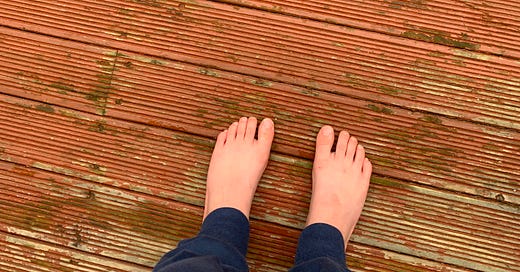For the next few months, I’m going to share a series called How do feminists do that? based on research and a little personal experience.
If there’s something you’d like to see, drop me a message. I’d love to write on a topic you want to know more about. First up, here’s how feminists keep house, according to recent research on gender equity in the home.
///
When I was looking for a house, I’d sometimes send my family members house listings for their opinion. One common refrain was “You don’t want that one, too much maintenance!” (usually referring to a beautiful 1920s villa). I can confirm 8.5 years into home ownership, house maintenance is a pain in the ass (despite not buying the 1920s villa). I often wonder how much time women spend on home maintenance and household chores. It’s usually a woman keeping a mental checklist of things that need doing, assigning tasks (if a male partner comes to the party), and following through on them. Women have less time for leisure activities, compared to men, and spend almost double the time on household chores every day (Codina & Pestana, Time Matters differently in leisure experience for men and women, 2019; The Washington Post, 2025 – paywalled; The Week, 2025).
So how do feminists cope? How do they ensure the whole household is contributing to the important work of maintenance and cleaning tasks?
Turning a mental checklist into a physical one, together with your partner
One way of dividing maintenance and household tasks, established by Eve Rodsky, is the Fair Play Method. Essentially it is about writing out all the tasks required to run a household – daily, weekly, monthly, annual tasks – and then working with your partner to assign them to yourself or to them. Once you’ve been assigned a task, you’re responsible for it. For some couples, it’s best to break down a task to all its components and then one person does all of them (eg. Washing clothes, hanging them out, folding them, putting them away). By assigning tasks, the mental load of ‘who is going to do that’ is largely taken away. However, each partner needs to stick to their task list and execute the tasks, rather than ignoring them, which is a common pitfall of this method that feminists have highlighted.
Another key component of this method is establishing the standard of the task. Should ‘cleaning the dishes’ also include putting the dishes away and wiping down the bench? It may sound pedantic, but once these details are worked out and an agreement is in place (see the spreadsheet, or the list), it becomes harder to argue about who is doing what and what is expected. It also shows whether your partner is willing to follow through on things.
Frequent tasks for women vs infrequent tasks for men
Women engage in invisible, repetitive and daily tasks. They are often immovable and done at a specific time. Men are often responsible for weekly or monthly tasks (mowing the lawns, taking out the trash, painting the fence…). While on the face of it, these male-dominated tasks seem time-consuming, the amount of time allocated overall is so much less than the daily grind tasks that add up to several hours a week. There’s also the rigidity of the daily tasks being done at a fixed time, such as picking up children from school or making dinner. They must be done, then and there, which can cut into the flow of the day (Huff Post, Men and women Chores Difference, 2025). Being aware of this difference, and turning to task definition and a physical chore list, is key.
Go ahead and make me a curry
A recent Labour statistics survey done in the U.S. suggests that men are doing more chores than they used to, and that is mostly because they’re preparing more meals. This may be because cooking is no longer considered a ‘chore’, with the rise of cooking shows, different types of cuisine and creative cooking. The bad news is that women are still on average doing 2 hours of house and yard work a day, and their male partners are doing 1 hour a day (perhaps it’s just the cooking?) (The Week, 2025; The Washington Post, 2025 – paywalled). Feminists let the men cook, while holding fast to the notion that there is still a daily housework time gap to be closed.
To outsource or not to outsource
When we outsource housework (and to a lesser extent, house maintenance), we’re often just putting the work onto other women. And many of these women, proportionally, are not white. For example, in New Zealand, there are more Māori, Pacific and Asian people in the cleaning sector as opposed to the total economy (Ringa Hora, Cleaning Service Sector Snapshot, 2023) (noting that these stats are for business cleaning, mostly). When looking at the stats for domestic cleaners in New Zealand, the vast majority are female (Census, 2018). To me, if a heterosexual couple can model in their home an equitable balance of housework and home maintenance, and especially when they have children, this is valuable. When it’s a joint effort, kids need to see that. Likewise, giving children (especially boys) a sense of autonomy and responsibility when it comes to household tasks is important, such as assigning them an area of the house to be responsible for, and encouraging them to notice what needs doing. Not just providing them with a list or telling them what needs to be done.
Ultimately, by modelling an equitable household, Gen Alpha boys and girls are becoming the feminists of tomorrow. God knows we need more of them.
What’s next in How do feminists do that?
The next post is on: How feminists manage their finances.
Send me a message or a comment - what do you want to see me research and write about next?





